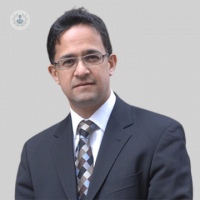Mid-facelift: target the earliest signs of aging
Autore:For many people, the lower eyelids and cheeks are their biggest problem of facial ageing. A traditional facelift might not entirely treat the upper cheek and lower eyelid areas of the face, so they might opt to have a mid-facelift. Mr Jonathan Britto, a prestigious craniofacial plastic surgeon based in London, explains what a mid-facelift is and what happens during the procedure.

What is a mid-facelift?
As the cheek below the lower eyelids droops with age, and the lower eyelids lose their strength and become baggy, a deep groove develops along a line between the lower eyelid and the cheek, often called a tear-trough. The cheek sags so that a fold also develops between the nose and the corner of the mouth along a line called the nasolabial fold.
Midface lifts try to address these problems by lifting this mid portion of the face and restoring the youthful continuity between the lower eyelid and cheek. Midface lifts can be performed at different levels in the face depending on the ageing process and indication. The results are often very rejuvenating.
Midface lifts can also be used to correct problems from conventional lower eyelid blepharoplasty surgery when often the lower eyelid can be pulled down.
Some people have less cheekbone support for their lower eyelid, causing them to age quicker in this area. It’s possible to insert implants on the cheekbones at the same time as doing a midface lift to help support the lower eyelids.
Midface lifts are more complex procedures than conventional facelifts and have a longer recovery time.
Who is likely to opt to have the procedure?
The following are most likely to benefit from midface lifting:
- People with significant lower eyelid ageing
- Those with poor bone support of the eyelids
- Those with eyelids that have been pulled too low by traditional lower blepharoplasty
Many people will benefit from a combination of a mid-facelift and traditional facelift techniques. However, the patient must understand that there’s a much longer recovery time from midface lifting, which usually takes several months.
What happens during the procedure?
Midface lifts can most often be done using incisions in the lower eyelid similar to those of lower blepharoplasty. Some types of midface lift can also be done by making incisions in the hair of the temple region and occasionally by using long incisions within the hair that go from just above each ear. Midface lifts can lift the front cheek by lifting the muscle layer or also lifting all the tissues of the front of the cheeks higher up along the bone.
Traditional facelifts employ incisions around the ears to lift the skin of the cheeks allowing a layer below this called the superficial muscular aponeurotic system (SMAS) to be lifted. There are quite a number of operations described to lift this SMAS layer and the best operation needs to be chosen for each person. Traditional facelifts work best for the side part of the cheek, jowls and the neck but have less effect on the cheek below the eyes where midface lifts have the best effect.
How long does it last?
It’s not possible to know exactly how long the effect of facelifts will last on people. This is because people age and heal in different ways.
It can also depend on the age of someone at the time of the procedure and the possible hormonal changes of menopause. People who produce strong scar tissue, which can hold the repositioned tissues of the face better, will end up with longer lasting results.
If you are considering a mid-facelift, visit Mr Jonathan Britto’s profile and book a consultation via the website.


